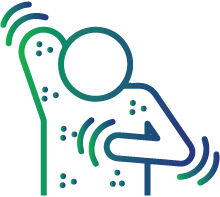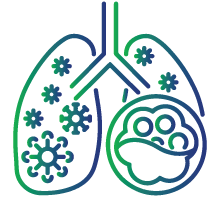
Angiotensin Converting Enzyme (ACE) Test
Angiotensin Converting Enzyme (ACE) Test
The Angiotensin Converting Enzyme (ACE) test is a diagnostic test that measures the level of angiotensin-converting enzyme in your blood. ACE is an enzyme that converts angiotensin I to angiotensin II and helps in the regulation of blood pressure. Higher ACE levels in your blood are an indication of sarcoidosis, a chronic granulomatous condition that can affect any part of the body, mostly the lungs. Healthcare providers use this test to screen for the level of ACE in your blood and to differentiate sarcoidosis from other health conditions.
ACE test is also known as serum angiotensin converting enzyme, SACE.
Angiotensin-converting enzyme improves the cardiac and vascular functioning, helps in the prevention of age-related mitochondrial dysfunction, increases production of nitric oxide, which plays a major role in the skeletal muscle contraction, and also plays a role in the conversion of type II to type I muscle fibres.
An ACE test is done to determine the ACE enzyme levels in the blood. Higher or lower levels of ACE may affect heart and lung functioning. Thus, getting your ACE test is recommended to screen for and monitor the abnormal chronic symptoms that are possibly due to sarcoidosis
Symptoms of sarcoidosis
ACE test is indicated for individuals who are having symptoms of sarcoidosis, these include

Headache

Cough

Wheezing or shortness of breath

Fever

Extreme tiredness

Chest pain

Unexplained weight loss

Painful or stiff joints

Dry mouth

Unusual skin changes like rashes and sores

Red, watery eyes

Granulomas (abnormal masses found in the lungs)
Test preparation:
Fasting is required for 10 to 12 hours before the ACE test. During this blood test, a healthcare professional will take a small amount of blood from a vein in your arm using a small needle, which is then collected in a test tube or vial. This usually takes less than a few minutes. Make sure to follow specific instructions provided by your healthcare professional before the test.
Interpretation of results
The normal range of angiotensin-converting enzyme levels varies based on the methodology and kit used by a particular diagnostic centre. The range also differs based on age.
Angiotensin-converting Enzyme (ACE) Range
|
Type |
Gender |
Age |
Units |
|
ACE |
Unisex |
>2 years |
18-95 units/l |
|
ACE |
Unisex |
3-14 years |
22-108 units/I |
|
ACE |
Unisex |
>15 years |
14-82 units/I |
Deviation from the normal range indicates the following:
· It is important to know that the level of ACE may vary based on the severity of the underlying disease condition. The normal range of ACE in adults usually ranges less than 40 micrograms/L.
· Higher levels of ACE may be a sign of sarcoidosis. As sarcoidosis gets worse or gets better, ACE levels may increase or decrease.
· Higher levels of ACE may also be linked with various health conditions, including:
o Addison disease, which affects Adrenal glands
o Cancer of the lymphatic tissue (Hodgkin’s disease)
o Diabetes (a metabolic disorder)
o Swelling of the liver and inflammation (hepatitis) due to alcohol use
o Lung diseases such as asthma, cancer, chronic obstructive pulmonary disease, or tuberculosis
o Kidney disorder called nephrotic syndrome
o Multiple sclerosis, which affects muscles
o Over-functioning thyroid (hyperthyroidism)
o Over functioning of parathyroid glands (hyperparathyroidism)
o Ulcers of the stomach
· Lower levels of ACE may indicate the following conditions:
· Chronic liver disease
· Chronic kidney failure
· Eating disorder called bulimia Nervosa
· Steroid therapy (usually prednisone)
· Sarcoidosis treatment
· Non-functioning of thyroid (hypothyroidism)
FAQs
What is the significance of ACE testing?
The ACE test determines the level of ACE that is produced in your body. The screening, monitoring, diagnosis, and follow-up of sarcoidosis as well as other medical conditions can be done with an ACE blood test. It is also indicated in individuals who are having similar symptoms of sarcoidosis to differentiate it from other health conditions
What are the risks associated with the ACE test?
There are no known risks. During the blood test, one may experience minor pain or bruising where the needle was inserted, but most symptoms will subside quickly
What further tests I might require if I have an abnormal ACE test result?
Your ACE levels (high or low) will determine what kind of additional tests should be done. Your doctor might identify the cause of elevated ACE levels or discuss why ACE levels are low. Further tests could consist of:
· Radio-imaging tests such as a CT scan to look for granulomas on your organs
· Chest X-ray
· Sputum cultures
· Tissue samples for biopsy
What factors might affect my ACE test results?
Your test results may be affected by various factors like tuberculosis exposure, IV (intravenous) drug use, and working in an environment containing beryllium or other airborne toxins. Your results may also be affected by some medications, such as those prescribed to control high blood pressure.
What is the turnaround time (TAT) for the ACE blood test?
Test results of an ACE blood test are usually available after 2-3 working days after the collection of the sample

